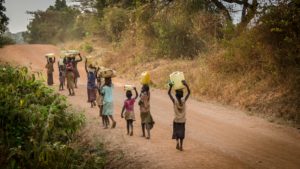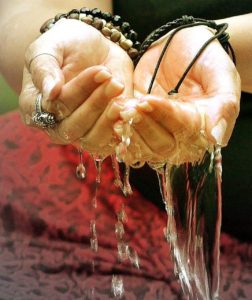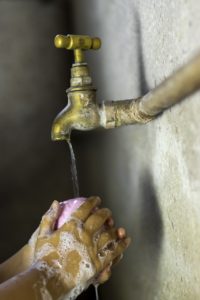Water is vital for life. And yet more than ¼ of the world’s population does not have safe drinking water.
What Is Potable Water?
Put simply, potable water is safe to drink. We use it to bathe and irrigate, in industry, for recreation, and – yes – to drink. In 2022, 296 million people had to retrieve water from unprotected wells and springs, while a further 115 million collected untreated surface water from lakes, streams, and ponds.[1]

Sub-Saharan Africa has some of the poorest water control in the world. Nearly half the population of the Democratic Republic of Congo (DRC) and Madagascar are without an improved water source (40.9%). That’s 40.52 million people in DRC relying on unimproved water sources. There are also 35.74 million in India and 27.15 million in China experiencing the same. In many countries, including our own, urban populations are more likely to have access to safely managed water supplies.
Sadly, not everyone’s water is safe.

Contaminants
When it comes to our water, “untreated” means more than an unpleasant taste. It impacts health. Many of the millions of people relying on untreated water also live in areas where sanitation is poor, resulting in hundreds of millions of water-born infections. Cholera, dysentery, typhoid, and polio are all linked to poor sanitation and contaminated water. Every year some 1 million people die from diseases such as diarrhea and schistosomiasis from the water. Water, especially stagnant water, also carries insects such as mosquitoes that carry diseases such as malaria, dengue fever, Zika, or West Nile virus. In many developing countries where water must be drawn and carried by hand, storage containers are left open, effectively inviting these insects and the diseases they carry inside.
Diseases, however, are not the only pollutants. Ground water can contain naturally occurring lead and arsenic, both of which can be deadly. Contaminants can also be man-made. Chemicals from industrial and agricultural waste contaminate the water for hundreds of millions of people worldwide.
Water Management
Water, health, and sanitation go hand-in-hand. According to WHO, adequate access to safe drinking water, sanitation, and hygiene (WASH) could have prevented at least 1.4 million deaths in 2019. Many developing nations struggle with healthcare in part because of unsanitary conditions in which people live and the unsafe water they drink, bathe in, and irrigate with.
Water management is the control of water resources to minimize damage to life and property and to maximize efficient beneficial use.
Drains and sewars to keep fecal matter and other waste materials separate from water sources, dams and levees, irrigation, and treatment facilities to purify water are all key factors of water management. Developing such infrastructure requires extensive planning, coordination, and regulation and requires considerable effort and resources. While it can be a slow process, it is not all bleak; WHO reports that in the past two decades, 2 billion people have gained access to safe drinking water.[2]
Infrastructure is not the only focus, however. Raising awareness at a personal level is also important. When people are aware of possible contaminants, of the importance of hygiene practices that will make a difference – such as keeping a lid over water containers – they are empowered to keep themselves and their loved ones safe and healthy.

Sanitation and hygiene awareness are both included in awareness alerts through the Africa Health Link hPods that Blackbird Global Foundation is deploying throughout The Gambia and other ECOWAS countries right now! Every donation helps us bring better health and hygiene to millions in Sub-Saharan Africa. DONATE TODAY!
Don’t forget to check out our News Page for updates on our hPod Deployment Project!
Want to Know More?
Check out Our World in Data!
Or this WHO Fact Sheet!
[1] https://ourworldindata.org/clean-water Table “Share of the population not using an improved water source, 2022”
